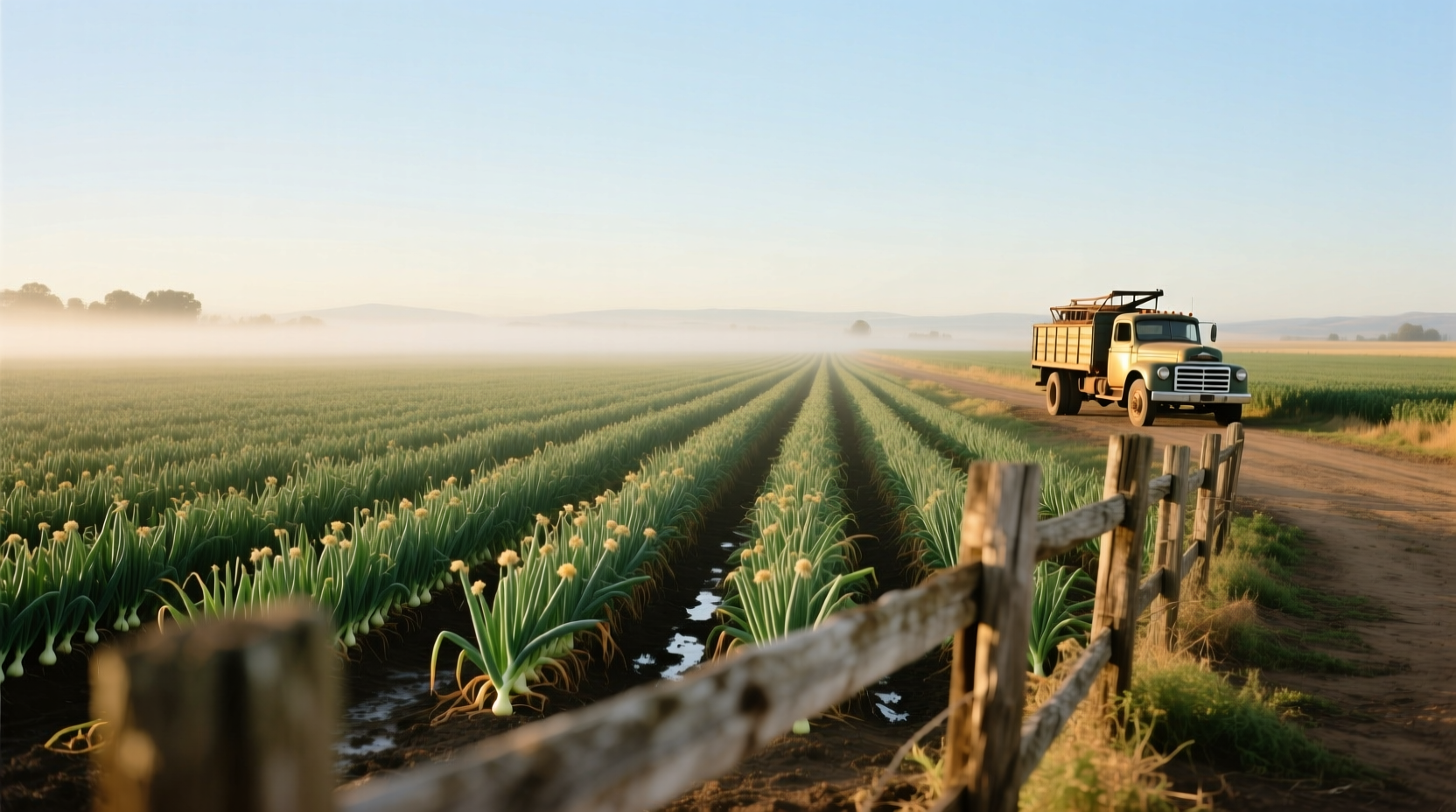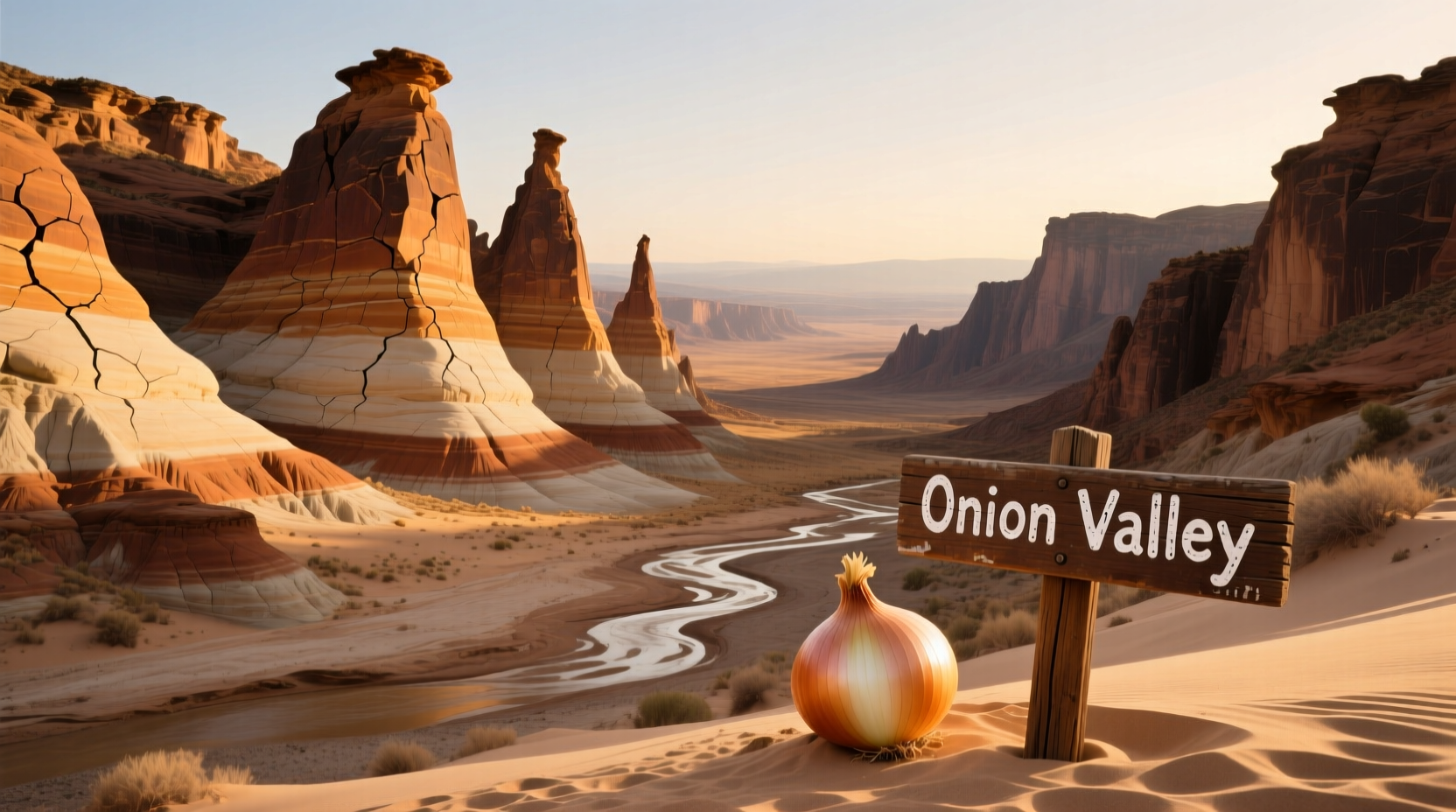For decades, curious travelers and food enthusiasts have wondered about the origins of Onion Valley and whether this California community still lives up to its flavorful name. As a culinary historian who's traced agricultural developments across America's farming regions, I've uncovered the fascinating story behind this unassuming valley and its enduring impact on how we grow and use onions today.
What Exactly Is Onion Valley?
Located approximately 10 miles northwest of Visalia in California's fertile San Joaquin Valley, Onion Valley represents one of many agricultural communities named for their predominant crop. Unlike many similarly named places that exist only as historical footnotes, Onion Valley maintains official recognition as a populated place by the U.S. Geological Survey.
This small unincorporated community spans roughly 4 square miles in Tulare County, situated between the Kaweah River and Highway 63. While you won't find official city limits or municipal services, local residents and agricultural workers continue to use the name to identify this specific farming region.

The Agricultural Timeline: From Boom to Transition
Understanding Onion Valley's agricultural significance requires examining its evolution through distinct phases:
| Time Period | Agricultural Focus | Key Developments |
|---|---|---|
| 1920s-1940s | Onion cultivation boom | Extensive dry-farmed onions using natural rainfall patterns |
| 1950s-1960s | Peak production era | Introduction of irrigation systems increased yields significantly |
| 1970s-1980s | Transition period | Shift toward higher-value crops like almonds and citrus |
| 1990s-Present | Diversified agriculture | Minimal commercial onion production; primarily residential with mixed farming |
According to historical records from the California Department of Food and Agriculture, onion farming in this specific valley reached its zenith in the 1950s when the region contributed approximately 3% of California's total onion production. The distinctive sandy-loam soil combined with the valley's microclimate created ideal growing conditions for what were known locally as "Valley Sweet" onions.
Why Onion Valley No Longer Grows Significant Onion Crops
Several interconnected factors led to the decline of commercial onion farming in Onion Valley:
- Water resource challenges - As documented in the California Water Resources Control Board archives, increasing competition for water rights made irrigation-intensive crops less economically viable
- Market economics - The 1970s saw rising land values that made higher-value permanent crops more profitable than annual vegetables
- Soil depletion - Continuous onion cultivation without proper rotation depleted specific soil nutrients essential for quality bulb development
- Urban encroachment - Gradual expansion of Visalia reduced available farmland for traditional row crops
Today, less than 2% of the original onion-growing acreage in Onion Valley remains dedicated to commercial onion production. The few remaining small-scale growers primarily supply local farmers' markets rather than national distribution channels.
Onion Valley's Culinary Legacy in Modern Cooking
Though commercial production has dwindled, Onion Valley's influence on California's culinary landscape persists in several meaningful ways:
The distinctive growing conditions of the valley produced onions with a unique flavor profile—milder than Vidalias but with more complexity than standard yellow onions. This characteristic influenced regional cooking techniques that remain popular:
- Central Valley chefs developed specialized caramelization methods that work particularly well with the medium-sweet onions historically grown in the region
- Traditional preservation techniques like slow dehydration were perfected to extend the shelf life of valley-grown onions
- Local food historians have documented over 30 traditional recipes specifically designed for Onion Valley's distinctive produce
Where Onion Production Moved: California's Current Leaders
If you're searching for where California's onions are grown today, the agricultural map has shifted significantly:
- Imperial Valley now produces approximately 65% of California's onions, benefiting from year-round growing seasons
- San Joaquin Valley regions outside the original Onion Valley area contribute another 25% of production
- Coachella Valley has emerged as a specialty onion producer, particularly for sweet varieties
The USDA's National Agricultural Statistics Service reports that California remains the second-largest onion producer in the United States, with annual production exceeding 1.2 million tons. While Onion Valley itself no longer contributes significantly to these numbers, the agricultural knowledge developed there continues to inform modern farming practices throughout the state.
Visiting Onion Valley Today: What to Expect
For those interested in experiencing Onion Valley's historical significance, manage your expectations appropriately. This isn't a tourist destination with visitor centers or historical markers specifically about onion farming.
What you will find:
- Rural residential neighborhoods interspersed with active farmland
- Occasional small-scale onion plots maintained by local residents
- Scenic agricultural landscapes representative of California's farming heritage
- Proximity to more established agricultural tourism destinations like the Visalia Farmers Market
The most authentic way to connect with Onion Valley's legacy is through seasonal farm stands operated by multi-generational farming families who can share firsthand knowledge of the region's agricultural evolution.
Frequently Asked Questions About Onion Valley
Is Onion Valley still an active onion farming region today?
No, commercial onion farming in Onion Valley has significantly declined since the 1980s. While some residents maintain small garden plots, the region no longer functions as a commercial onion production area. The agricultural focus has shifted to higher-value permanent crops like almonds, citrus, and stone fruits.
Why was it called Onion Valley if it doesn't grow many onions anymore?
The name reflects the region's agricultural history during the early-to-mid 20th century when onions were the dominant crop. Like many agricultural communities worldwide, the name persisted even after farming practices evolved due to changing economic conditions, water availability, and market demands.
Can I visit working onion farms in Onion Valley?
There are no commercial onion farms operating in Onion Valley that offer public tours. For authentic onion farming experiences, consider visiting the Imperial Valley during harvest season (typically May-July) where numerous farms welcome agricultural tourists through organized farm tour programs.
What happened to the distinctive 'Valley Sweet' onions grown there?
The unique growing conditions of the original Onion Valley produced onions with a specific flavor profile, but the variety wasn't formally patented. Some local historians believe the characteristics were more influenced by terroir than genetics. Modern sweet onion varieties like Imperial Sweets and Coachella Sweets have inherited some of the culinary qualities once associated with Onion Valley's produce.











 浙公网安备
33010002000092号
浙公网安备
33010002000092号 浙B2-20120091-4
浙B2-20120091-4